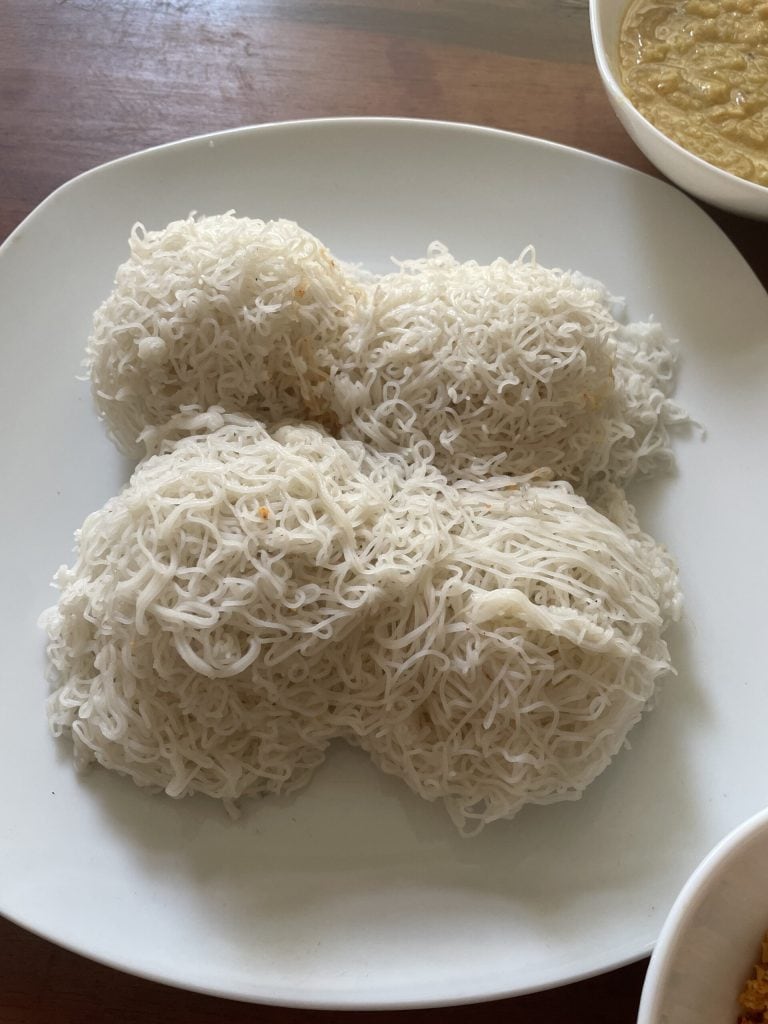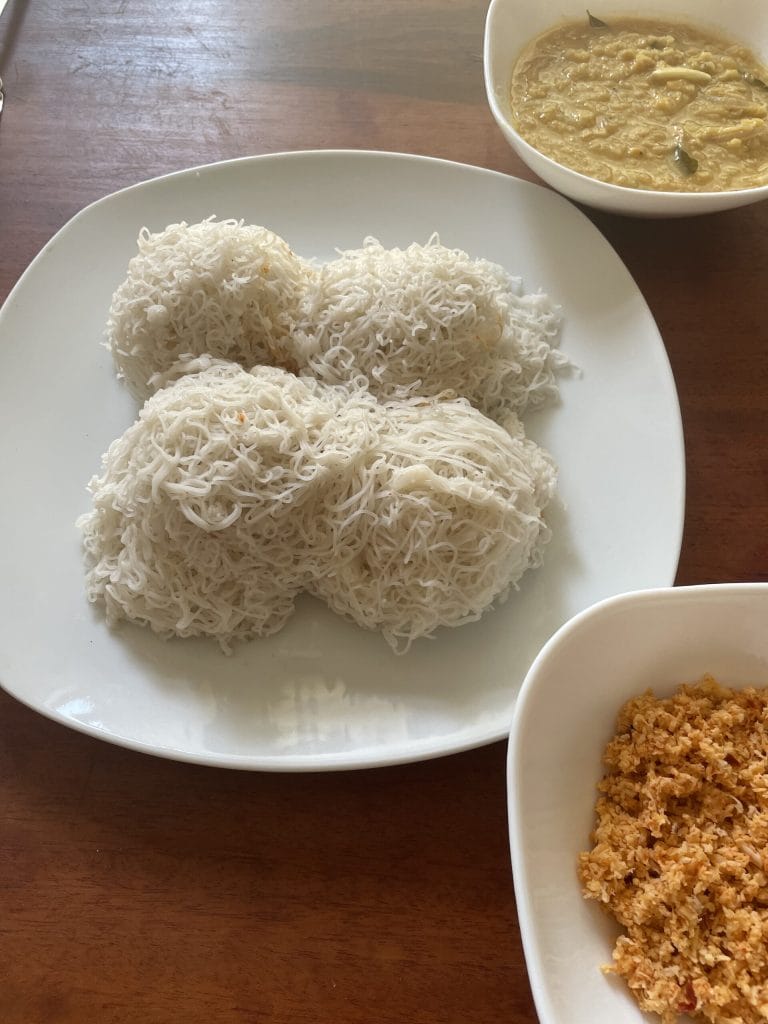The recipe for idiyappam, also known as string hoppers (ഉഴുന്നാപം), has ancient origins in southern India, particularly in the Tamil Nadu and Kerala regions, and from there it spread to Sri Lanka over the centuries through ongoing cultural, commercial, and religious exchanges between the Tamils of India and the Tamils of Sri Lanka.
These are noodles made from rice flour, steamed in thin strands, prepared by mixing rice flour with hot, salted water, and then pressing the dough through a special tool to form thin circles. Gluten-free.
The name “idiyappam” comes from Tamil: “idi” (beaten, pounded) + “appam” (pancake or wafer).
They are also called noolappam or noolputtu in the Tamil language: the word nool means “string”.
This is a food that dates back to the time of the Tamil kingdoms, already consumed during breakfasts or as a ritual food.
With the migration and Tamil influence in Sri Lanka, especially in the northern and eastern regions, the dish was also adopted by the Sinhalese communities, who adapted it, creating the variant called “string hoppers” in English, or “indiyappa” in Sinhalese.
In India, it is mainly consumed with sweet coconut milk or stews.
In Sri Lanka, it is traditionally served with pol sambol (spicy grated coconut) and dal curry (parippu) or chicken curry.
The dish originates in India, but it has been completely integrated into the culinary tradition of Sri Lanka, where it is now considered a typical and iconic food, especially for breakfast or dinner.
These were the ones at breakfast at Villa Nivartana in Bentota, during my trip to Sri Lanka in October 2025.

- Difficulty: Medium
- Cost: Very economical
- Preparation time: 10 Minutes
- Portions: 4 People
- Cooking methods: Steaming
- Cuisine: Indian
- Seasonality: All seasons
Ingredients
- 12.3 oz rice flour
- 1 tsp salt
- 1.7 cups water (warm)
Tools
- 1 string hopper maker
- 1 Steamer
Steps
In a bowl, mix flour and salt.
Slowly add the hot water, stirring with a spoon (or stick) until the flour forms a dough.
Knead by hand until the dough is soft, flexible but not sticky. If it’s too dry, add a little water; if too wet, a little flour.
Lightly grease the trays (or mats) for idiyappam (or small perforated supports).
Place the dough in an idiyappam mold or press. Press the thin strands (rice noodles) in circles on the tray, double-layer if you want more texture.Transfer the trays to the steamer basket and steam for about 5–10 minutes (depending on thickness).
Once cooked, gently remove from the steamer and serve immediately.

FAQ (Questions and Answers)
What is the difference between Indian and Sri Lankan idiyappam?
In the Indian version:
Roasted rice flour is used for better water absorption and a softer texture.
Sometimes grated coconut is added to the dough or as a garnish.
Boiling water is poured slowly into the flour to get the right consistency.
Steaming in India lasts 7–9 minutes (depending on thickness).
In Kerala / Tamil Nadu, idiyappam is served with stews, chutney, sweet coconut milk, or vegetable or non-vegetable curry.

